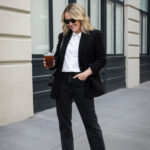Edwardian Vs Victorian Fashion: understanding the nuances between these two iconic eras can elevate your style game. At mens-fashion.net, we break down the key differences in silhouettes, fabrics, and social contexts, enabling you to appreciate and perhaps even incorporate elements of both into your modern wardrobe. Embrace the charm of vintage aesthetics with our expert guidance, and discover how historical fashion trends influence contemporary menswear.
1. What Defines Victorian Era Fashion?
Victorian fashion, dominant during Queen Victoria’s reign (1837-1901), was characterized by modesty and opulence. Women’s garments featured full skirts, corsets that tightly laced the waist, and multiple layers. Key elements included shape-giving bustles, top hats, waist-accentuating petticoats, and bonnets. Getting dressed was a time-consuming affair. According to the Fashion Institute of Technology (FIT), Victorian fashion reflected the era’s strict social norms and emphasized a woman’s status and virtue through elaborate and concealing attire.
1.1 Key Elements of Victorian Women’s Dress
| Element | Description |
|---|---|
| Full Skirts | Wide and voluminous, often supported by crinolines or hoops. |
| Corsets | Tight-laced to create a small waist, restricting movement. |
| Bustles | Padded frameworks used to expand the fullness of the skirt at the back. |
| Petticoats | Multiple layers worn under the skirt to add volume and shape. |
| Bonnets | Head coverings that concealed most of the hair, emphasizing modesty. |
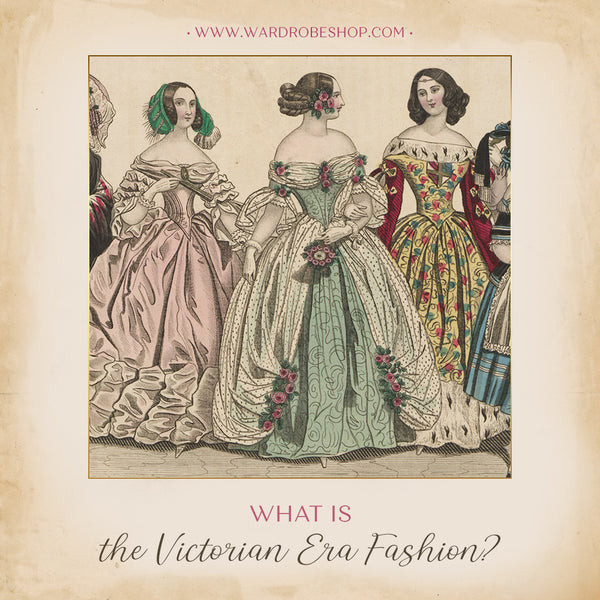
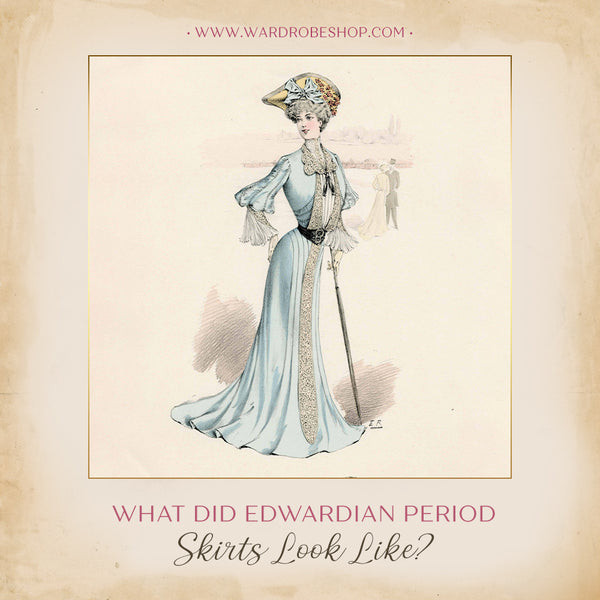
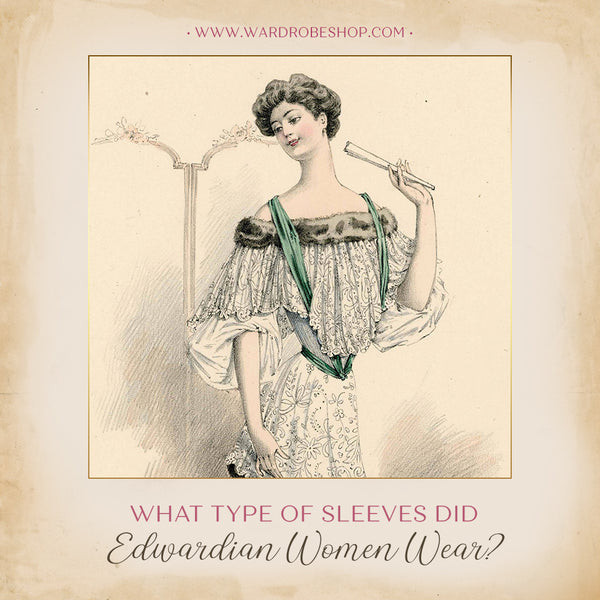
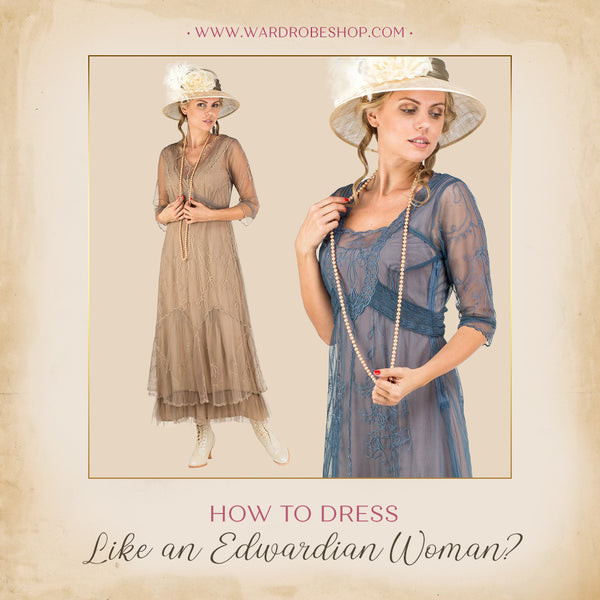
1.2 How Victorian Fashion Reflected Social Classes
Victorian fashion differed across social classes. Upper-class women wore tight skirts made from velvet, satin, or silk and multiple petticoats, often embroidered with lace. Middle-class or working women wore dresses made from simple cotton or wool, paired with a corset, which were more practical for their daily activities, as noted in a study by the Victorian and Albert Museum in 2023.
1.3 Evolution of Victorian Fashion Over Time
Victorian fashion evolved significantly throughout the era. Skirts expanded in the 1850s with the use of crinoline cages. During the 1860s, skirts grew narrower as bustles replaced heavy petticoats and crinoline cages. By the 1890s, trimmed bonnets were in vogue. These changes reflect shifting tastes and technological advancements in fabric production, as highlighted in a 2024 article in “Harper’s Bazaar.”
2. What Characterized Edwardian Era Fashion?
Edwardian fashion, popular from 1901 to 1910, shared similarities with Victorian fashion but featured more modern silhouettes. Edwardian style was heavily influenced by King Edward’s exposure to continental European art and style, marking a style revolution, according to a 2022 analysis by the Costume Society of America.
2.1 Influences Shaping Edwardian Style
| Influence | Description |
|---|---|
| King Edward VII | His travels and exposure to European cultures influenced fashion trends. |
| Continental Europe | European art and style introduced new aesthetics to England. |
2.2 Edwardian Corsets: A Shift Towards Comfort
Edwardian women wore looser, more comfortable corsets known as “health corsets.” These corsets didn’t cinch the waist or compress the abdomen, promoting better posture and reducing back pain. Instead, they flowed straight across the bustline, forcing the bosom upwards and hips backward. According to research from the Fashion Institute of Technology (FIT) in July 2025, these corsets were designed to provide comfort and support without sacrificing the fashionable S-shape silhouette.
2.3 The S-Shape Silhouette: Defining Edwardian Elegance
Edwardian skirts and corsets were designed to create an S-shape silhouette. This was achieved by forcing the hips back and the chest outwards, accentuating the curve of the back. These dresses, also known as tea gowns or tea dresses, were made from soft fabrics and flared over the hips.
3. How Did Sleeves Differ Between the Eras?
During the Edwardian period, sleeves were relaxed and not as fitted or cinched at the wrists. The fabric used for the sleeves was also softer, with a ribbon used to cinch the puffy sleeves at the elbow. Edwardian sleeves typically had a flare at the bottom, often accentuated with hanging pleats of lace or embroidered knit.
3.1 Evolution of Sleeve Styles in Fashion History
| Era | Sleeve Style |
|---|---|
| Victorian | Fitted, cinched at the wrists, often puffed. |
| Edwardian | Relaxed, softer fabrics, flared, with pleats. |
4. Victorian vs. Edwardian Fashion: What Are the Core Distinctions?
Victorian fashion was dramatic, featuring cinched waistlines, voluminous skirts, and layers of lace and ruffles. Edwardian fashion, on the other hand, embraced a more relaxed look with lighter fabrics and simpler designs. Both eras, however, shared a love for luxury, charm, and elegance.
4.1 Key Differences in Silhouette and Style
| Feature | Victorian Era | Edwardian Era |
|---|---|---|
| Silhouette | Cinched waist, full skirt | S-shape, more relaxed |
| Corsets | Tight-laced, restrictive | Looser, more comfortable |
| Fabrics | Heavy, layered | Lighter, simpler |
| Skirts | Voluminous, with crinoline | Flared over hips, less bulky |
4.2 Social and Cultural Contexts
| Aspect | Victorian Era | Edwardian Era |
|---|---|---|
| Social Norms | Strict, emphasis on modesty | More relaxed, influenced by European styles |
| Cultural Values | Emphasis on status and tradition | Focus on leisure and modern silhouettes |
4.3 A Comparative Summary Table
| Aspect | Victorian Fashion | Edwardian Fashion |
|---|---|---|
| Time Period | 1837-1901 | 1901-1910 (but lasted until 1914) |
| Silhouette | Hourglass: Full skirts, cinched waist | S-Bend: Pigeon-breasted shape, elongated lines |
| Corsetry | Heavily boned, tight-laced, restrictive | Lighter boning, less restrictive |
| Skirts | Wide, supported by crinolines and bustles | Slimmer, flared at the hem (trumpet or bell shape) |
| Fabrics | Heavy: Velvet, silk, brocade | Lighter: Lawn, voile, lace |
| Embellishments | Extensive: Lace, ribbons, embroidery | Simpler: Appliqués, delicate embroidery |
| Necklines | High, often with lace or frills | Lower, sometimes with a slight V-neck |
| Sleeves | Fitted, often with embellishments | Looser, puffed or bishop sleeves |
| Outerwear | Shawls, capes, heavy coats | Duster coats, lightweight jackets |
| Headwear | Bonnets, hats with elaborate decorations | Larger hats with feathers and ribbons |
| Footwear | Ankle boots, heeled shoes | T-strap shoes, button-up boots |
| Social Context | Emphasis on modesty and social status | Focus on leisure activities and modernity |
| Key Influences | Queen Victoria’s moral code | King Edward VII’s cosmopolitan tastes |
| Overall Aesthetic | Opulent and restrictive | Elegant and more relaxed |
5. How Can You Incorporate Elements of Edwardian Fashion Today?
To dress like an Edwardian woman, opt for a full-length, flowing dress with a high neck, a belt at the waist, and loose sleeves that fasten at the wrist. Choose cotton or wool for casual settings and silk, satin, or linen for formal events. Accessorize with light-colored gloves, a parasol, and broad-heeled black shoes. You can find vintage-inspired pieces at boutiques like those listed above, or explore online retailers specializing in historical fashion.
5.1 Modern Adaptations of Edwardian Style
| Item | Modern Equivalent |
|---|---|
| Full-length dress | Maxi dress with a high neckline |
| Loose sleeves | Bishop sleeves or flowy, wide sleeves |
| Belted waist | A-line dress with a defined waist |
| Parasol | Wide-brimmed hat |
| Broad-heeled shoes | Block-heeled pumps or ankle boots |
5.2 Key Pieces to Achieve the Look
- Flowing maxi dresses: Look for dresses with empire waists and soft, draping fabrics like rayon or chiffon.
- Lace blouses: Pair a delicate lace blouse with high-waisted trousers or a skirt for an elegant touch.
- Wide-brimmed hats: A wide-brimmed hat adds a touch of Edwardian sophistication to any outfit.
- Ankle boots: Choose ankle boots with a slight heel for a vintage-inspired look.
- Long gloves: Accessorize with long gloves for a touch of Edwardian elegance, perfect for special occasions.
6. Can Men Adapt and Integrate Victorian and Edwardian Fashion Into Their Wardrobe?
Absolutely. Men can draw inspiration from Victorian and Edwardian fashion to create a sophisticated and unique style. Victorian-era men’s fashion was characterized by tailored suits, frock coats, and accessories like pocket watches and top hats. Edwardian fashion saw the introduction of the lounge suit and a more relaxed silhouette.
6.1 Victorian Era Men’s Fashion
- Tailored Suits: Dark, formal suits with high-buttoning jackets.
- Frock Coats: Knee-length coats worn over suits.
- Waistcoats: Often ornate, adding a layer of sophistication.
- Accessories: Pocket watches, top hats, and walking sticks.
6.2 Edwardian Era Men’s Fashion
- Lounge Suits: Less formal than frock coats, suitable for leisure and business.
- Knickers and Breeches: Often worn for sporting activities.
- Boating Blazers: Striped blazers for recreational wear.
- Accessories: Straw boaters, ties, and pocket squares.
6.3 Modern Adaptations for Men
To incorporate Victorian and Edwardian elements into your modern wardrobe, consider the following:
- Tailored Suits: Opt for slim-fit suits in classic colors like navy or charcoal.
- Waistcoats: Add a waistcoat to your suit for a touch of vintage flair.
- Pocket Squares: Use pocket squares with intricate patterns to elevate your look.
- Accessories: Incorporate accessories like pocket watches, tie bars, and vintage-inspired hats.
- Fabrics: Choose fabrics like tweed, wool, and linen for a classic, timeless appeal.
6.4 Key Pieces to Achieve the Look
- Slim-fit suits: Modern, tailored suits in dark colors.
- Vintage waistcoats: Ornate waistcoats to add a touch of Victorian elegance.
- Pocket watches: A classic accessory that adds character.
- Tweed jackets: Perfect for a refined, vintage-inspired look.
- Bow ties: A stylish alternative to traditional ties.
- Wingtip shoes: These shoes can add a touch of class to almost any outfit.
7. Understanding the Color Palettes of Each Era
Both the Victorian and Edwardian eras had distinct color palettes that reflected the materials available and the social attitudes of the time. Understanding these color differences can help you create more authentic and inspired looks.
7.1 Victorian Color Palette
- Early Victorian (1830s-1850s): Colors were often muted and natural due to the limitations in dye technology. Common colors included:
- Earth Tones: Browns, grays, and greens.
- Muted Pastels: Soft blues, pinks, and lavenders, often achieved with natural dyes.
- Mid-Victorian (1850s-1870s): The invention of synthetic dyes like mauveine (aniline purple) revolutionized the color palette. This period saw the introduction of:
- Bright Colors: Purples, greens, and blues became fashionable and more accessible.
- Jewel Tones: Rich shades like emerald green, sapphire blue, and ruby red.
- Late Victorian (1870s-1901): Colors became more somber, reflecting the mourning culture and aesthetic movement. Common colors included:
- Dark Hues: Deep greens, burgundies, and blacks.
- Somber Shades: Grays and browns remained popular, often used in combination with darker accents.
7.2 Edwardian Color Palette
The Edwardian era moved towards lighter, brighter, and more delicate colors, reflecting the optimism and leisure-oriented lifestyle of the upper classes.
- Light and Airy: Common colors included:
- Pastels: Soft pinks, blues, greens, and lavenders.
- Whites and Creams: Often used in combination with pastels to create a light and elegant look.
- Natural Tones:
- Earthy Shades: Light browns, tans, and beiges.
- Olive Greens: Soft, muted greens that evoke nature.
- Accents:
- Golds and Silvers: Used for embellishments and accessories, adding a touch of luxury.
7.3 How Colors Reflected Social Attitudes
- Victorian Era: The use of color reflected social status and moral values. Brighter colors became more acceptable as the era progressed, but there was still an emphasis on modesty and restraint. Darker colors were often associated with mourning and formality.
- Edwardian Era: Colors reflected a shift towards a more relaxed and optimistic outlook. Lighter colors and pastels symbolized leisure, elegance, and freedom from the stricter social norms of the Victorian period.
7.4 Table of Key Color Differences
| Feature | Victorian Fashion | Edwardian Fashion |
|---|---|---|
| Dominant Colors | Muted earth tones, jewel tones, dark hues | Light pastels, whites, creams, natural tones |
| Color Intensity | Rich and saturated | Light and airy |
| Social Meaning | Modesty, status, mourning | Leisure, elegance, optimism |
8. What About Accessories? Key Accessories of Each Era
Accessories played a crucial role in both Victorian and Edwardian fashion, adding the finishing touches that defined the overall look. The accessories of each era reflected different social norms and aesthetic preferences.
8.1 Victorian Accessories
- For Women:
- Bonnets and Hats: Elaborately decorated with ribbons, feathers, and flowers.
- Gloves: Essential for maintaining modesty and social etiquette.
- Parasols: Used to shield the skin from the sun and maintain a fair complexion.
- Jewelry: Often ornate, including brooches, lockets, and cameos.
- Shawls and Capes: Used for warmth and added layers to outfits.
- For Men:
- Top Hats: A symbol of status and formality.
- Pocket Watches: Carried in waistcoats and often adorned with chains.
- Walking Sticks: Used as a fashion statement and practical accessory.
- Gloves: Typically made of leather or cloth.
- Cravats and Ties: Often elaborate and intricately tied.
8.2 Edwardian Accessories
- For Women:
- Large Hats: Wider brims and more extravagant decorations, often adorned with feathers and ribbons.
- Gloves: Still essential, but often made of lighter fabrics like lace or silk.
- Parasols: Remained popular, but designs became more delicate and ornate.
- Jewelry: Simpler and more delicate than Victorian jewelry, often featuring pearls and gemstones.
- Handbags: Smaller and more decorative, often called reticules or chatelaines.
- For Men:
- Boater Hats: Made of straw and worn for leisure activities.
- Ties and Bow Ties: More colorful and patterned than Victorian cravats.
- Pocket Squares: Used to add a touch of elegance to suits.
- Canes: Lighter and more decorative than Victorian walking sticks.
- Cufflinks: Used to fasten shirt cuffs and add a touch of sophistication.
8.3 Table of Key Accessory Differences
| Feature | Victorian Accessories | Edwardian Accessories |
|---|---|---|
| Hats | Bonnets and small, decorated hats | Large hats with wide brims and feathers |
| Gloves | Essential, often made of heavy fabrics | Essential, often made of light fabrics |
| Jewelry | Ornate and elaborate | Delicate and simpler |
| Men’s Headwear | Top hats | Boater hats |
| Men’s Neckwear | Cravats and formal ties | Ties and bow ties |
9. Hairstyle Differences in The Two Eras
Hairstyles were an integral part of both Victorian and Edwardian fashion, reflecting the aesthetic ideals and social norms of each era.
9.1 Victorian Hairstyles
- Early Victorian (1830s-1850s):
- Styles: Hair was typically worn in soft, romantic styles with curls and loops around the face.
- Length: Long hair was a sign of femininity and was rarely cut short.
- Accessories: Hair was often adorned with ribbons, flowers, and decorative combs.
- Mid-Victorian (1850s-1870s):
- Styles: Hair became more elaborate, with intricate updos and braided styles.
- Arrangements: The “cage crinoline” effect influenced hairstyles, with hair arranged to create volume and width.
- Hairpieces: False hair and hairpieces were commonly used to add volume and create elaborate styles.
- Late Victorian (1870s-1901):
- Styles: Hair became more structured, with tightly pinned updos and severe partings.
- The Gibson Girl Look: Towards the end of the era, the Gibson Girl style emerged, featuring a more relaxed and voluminous updo.
9.2 Edwardian Hairstyles
- The Pompadour:
- Description: This iconic Edwardian hairstyle involved sweeping the hair up and back from the forehead in a soft, voluminous roll.
- Technique: Achieved with the help of padding, hairpins, and styling techniques to create height and fullness.
- Soft Waves and Curls:
- Styles: Hair was often styled with soft waves and curls around the face, creating a more relaxed and feminine look.
- The Marcel Wave: A popular technique that involved using heated irons to create defined waves in the hair.
- Accessories:
- Hats: Large, elaborate hats were a key accessory, often adorned with feathers, ribbons, and flowers.
- Hairpins and Combs: Used to secure and decorate updos.
9.3 Table of Key Hairstyle Differences
| Feature | Victorian Hairstyles | Edwardian Hairstyles |
|---|---|---|
| Volume | Moderate, with soft curls and loops | High, with the iconic pompadour |
| Styles | Intricate updos and braided styles | Soft waves, curls, and relaxed updos |
| Accessories | Ribbons, flowers, and decorative combs | Large hats, hairpins, and combs |
10. How Did Beauty Standards Differ in The Eras?
Beauty standards in the Victorian and Edwardian eras reflected different social values and aesthetic ideals.
10.1 Victorian Beauty Standards
- Fair Skin:
- Ideal: Pale skin was highly prized as a sign of wealth and leisure.
- Practices: Women went to great lengths to avoid sun exposure, using parasols, bonnets, and gloves to protect their skin.
- Modesty and Natural Appearance:
- Makeup: Makeup was frowned upon and associated with actresses or women of questionable reputation.
- Practices: Women aimed for a natural look, using subtle techniques to enhance their features.
- Full Figure:
- Ideal: A curvaceous figure was considered attractive, but it was always achieved through corsetry and padding.
- Emphasis: A small waist was the primary focus, achieved through tight-lacing.
10.2 Edwardian Beauty Standards
- Healthy Glow:
- Ideal: A more natural and healthy appearance became fashionable, with a slight flush in the cheeks.
- Practices: Women began to engage in outdoor activities like tennis and cycling, which contributed to a rosier complexion.
- Subtle Makeup:
- Acceptance: Makeup became more acceptable, but it was still used sparingly.
- Products: Rouge was used to add color to the cheeks, and subtle lip stains were applied.
- The Gibson Girl:
- Influence: The Gibson Girl, created by illustrator Charles Dana Gibson, embodied the Edwardian ideal of beauty.
- Features: Tall, athletic, and independent, with a flowing hairstyle and a natural, healthy appearance.
10.3 Table of Key Beauty Standard Differences
| Feature | Victorian Beauty Standards | Edwardian Beauty Standards |
|---|---|---|
| Skin Tone | Fair and pale | Healthy and slightly flushed |
| Makeup | Frowned upon, natural appearance | Accepted, but used sparingly |
| Figure | Curvaceous, achieved through corsetry | Athletic and natural, with a focus on health |
| Ideal Woman | Modest and demure | Independent and active |
mens-fashion.net is your go-to source for exploring these historical trends and integrating them into your modern style. We provide the insights and inspiration you need to create a wardrobe that reflects your unique taste.
FAQ: Victorian vs. Edwardian Fashion
1. What is the main difference between Victorian and Edwardian fashion?
Victorian fashion emphasized modesty and featured full skirts, tight corsets, and multiple layers, while Edwardian fashion embraced a more relaxed silhouette with lighter fabrics and looser corsets.
2. How did corsets differ between the two eras?
Victorian corsets were tight-laced and restrictive, designed to create a small waist. Edwardian corsets were looser and more comfortable, promoting better posture without compressing the abdomen.
3. What characterized Edwardian sleeves?
Edwardian sleeves were relaxed, made from softer fabrics, and often flared at the bottom, accentuated with hanging pleats.
4. How can I incorporate Victorian elements into my modern wardrobe?
Incorporate Victorian elements by choosing tailored suits, waistcoats, pocket watches, and fabrics like tweed and wool.
5. What are some key accessories for achieving an Edwardian look?
Key accessories for an Edwardian look include wide-brimmed hats, light-colored gloves, and parasols.
6. Where can I find vintage-inspired clothing for men?
You can find vintage-inspired clothing at specialty boutiques, online retailers, and vintage stores.
7. What were the key colors in Victorian fashion?
Key colors in Victorian fashion included earth tones, jewel tones, and dark hues.
8. What were the key colors in Edwardian fashion?
Key colors in Edwardian fashion included light pastels, whites, creams, and natural tones.
9. What is the S-shape silhouette in Edwardian fashion?
The S-shape silhouette was created by corsets that pushed the bosom upwards and hips backward, accentuating the curve of the back.
10. How did social class influence Victorian fashion?
Upper-class women wore expensive fabrics and elaborate designs, while middle-class and working women wore simpler, more practical clothing.
Ready to elevate your style with a touch of history? Explore mens-fashion.net for more articles, style guides, and the latest trends in menswear. Discover your unique style and make a lasting impression.
Address: 227 W 27th St, New York, NY 10001, United States.
Phone: +1 (212) 217-5800.
Website: mens-fashion.net.
